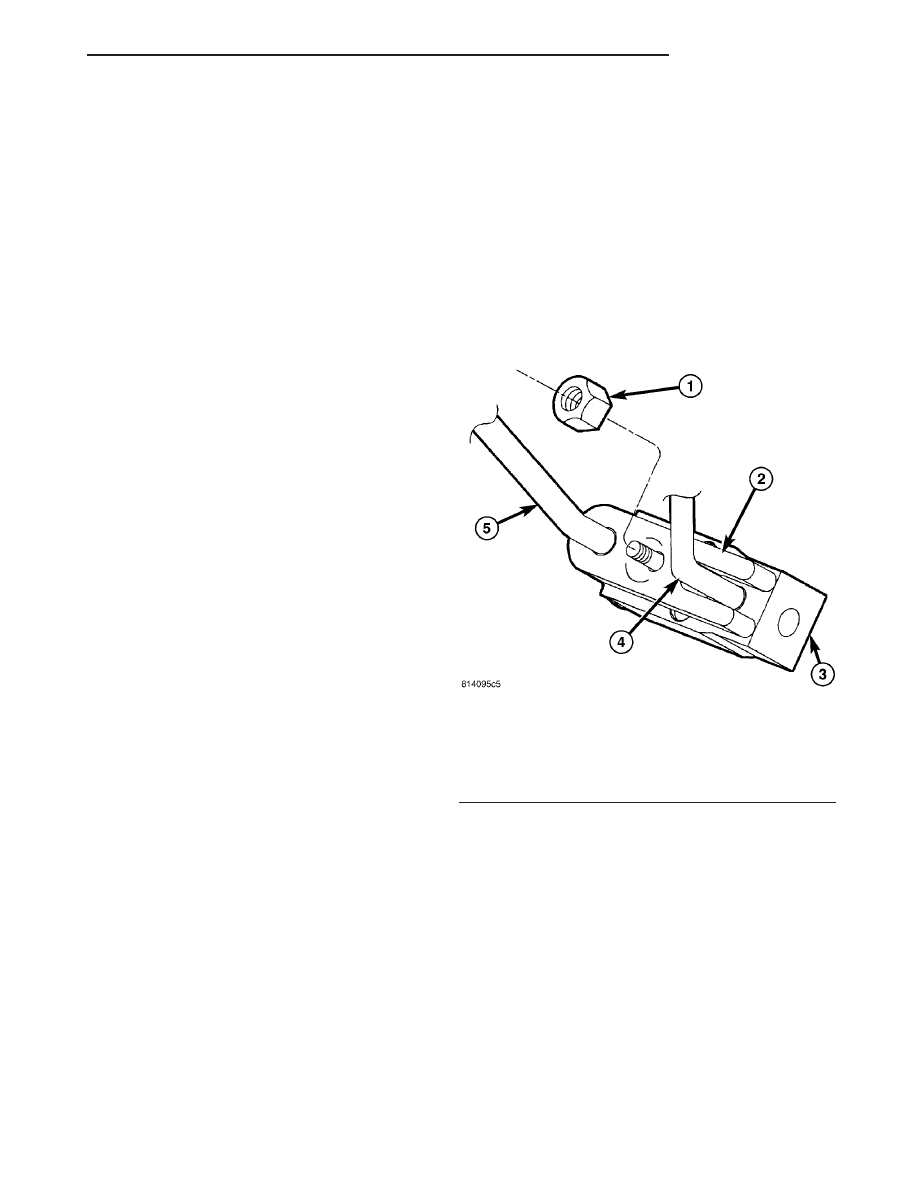Chrysler Sebring, Stratus sedan, Sebring Convertible. Manual - part 743

(1) Connect a charging station or manifold gauge
set to the refrigerant system service ports. Verify the
refrigerant charge level.
(2) Close all doors, windows and vents to the pas-
senger compartment.
(3) Set the A/C-heater controls so that the A/C
compressor is operating, the temperature control is
in the highest temperature position, the mode-air
doors is directing air output to the floor and the
blower motor operating is operating at the highest
speed.
(4) Start the engine and allow it to idle. After the
engine has reached normal operating temperature,
allow the passenger compartment to heat up. This
will create the need for maximum refrigerant flow
into the A/C evaporator.
(5) If the refrigerant charge is sufficient, the dis-
charge (high pressure) gauge should read 827 kPa to
1655 kPa (120 psi to 240 psi). The suction (low pres-
sure) gauge should read 207 kPa to 345 kPa (30 psi
to 50 psi). If OK, go to Step 6. If not OK, replace the
faulty A/C expansion valve.
WARNING:
Protect the skin and eyes from exposure to liquid
CO
2
or personal injury can result.
(6) If the suction (low pressure) gauge reads
within the specified range, freeze the A/C expansion
valve for 30 seconds using liquid CO
2
or another suit-
able super-cold material.Do not spray R-134a or
R-12 refrigerant on the A/C expansion valve for
this test. The suction (low pressure) gauge reading
should drop by 69 kPa (10 psi). If OK, go to Step 7 If
not OK, replace the faulty A/C expansion valve.
(7) Allow the expansion valve control head to thaw.
The suction (low pressure) gauge reading should sta-
bilize at 207 kPa to 345 kPa (30 psi to 50 psi). If not
OK, replace the faulty A/C expansion valve.
(8) When expansion valve testing is complete, test
the overall A/C system performance (Refer to 24 -
HEATING & AIR CONDITIONING - DIAGNOSIS
AND TESTING - A/C PERFORMANCE TEST).
REMOVAL
WARNING: Refer to the applicable warnings and
cautions for this system before performing the fol-
lowing operation (Refer to 24 - HEATING & AIR
CONDITIONING/PLUMBING - WARNINGS) and (Refer
to 24 - HEATING & AIR CONDITIONING/PLUMBING -
CAUTIONS). Failure to follow the warnings and cau-
tions could result in possible personal injury or
death.
(1) Recover the refrigerant from the refrigerant
system (Refer to 24 - HEATING & AIR CONDITION-
ING/PLUMBING
-
STANDARD
PROCEDURE
-
REFRIGERANT SYSTEM RECOVERY).
(2) Remove the bolt that secures the refrigerant
line retainer bracket to the right shock tower.
(3) Remove the nut that secures the refrigerant
line tapping plate to the A/C expansion valve (Fig.
16).
(4) Disconnect the A/C suction line and the A/C liq-
uid line from the A/C expansion valve and position
the refrigerant lines out of the way.
(5) Remove the O-ring seal from the suction and
liquid line fittings and discard.
(6) Install plugs in, or tape over the opened suc-
tion and liquid line fittings.
(7) Remove the two bolts that secure the A/C
expansion valve to the evaporator tube tapping plate
(Fig. 17).
(8) Remove the A/C expansion valve from the evap-
orator tube tapping plate.
(9) Remove the O-ring seals from the evaporator
tube fittings and discard.
(10) Install plugs in, or tape over the opened evap-
orator tube fittings and all expansion valve ports.
(11) Remove expansion valve.
INSTALLATION
(1) Remove the tape or plugs from the evaporator
tube fittings and all of the expansion valve ports.
(2) Lubricate new rubber O-ring seals with clean
refrigerant oil and install them on to the evaporator
tube fittings. Use only the specified O-rings as they
Fig. 16 A/C Expansion Valve-Tapping Plate
1 - NUT
2 - TAPPING PLATE
3 - A/C EXPANSION VALVE
4 - A/C LIQUID LINE
5 - A/C SUCTION LINE
JR
PLUMBING
24 - 71
A/C EXPANSION VALVE (Continued)